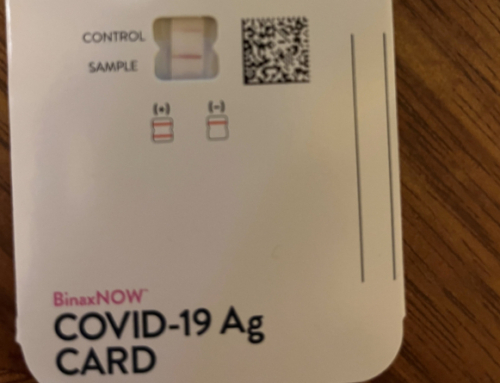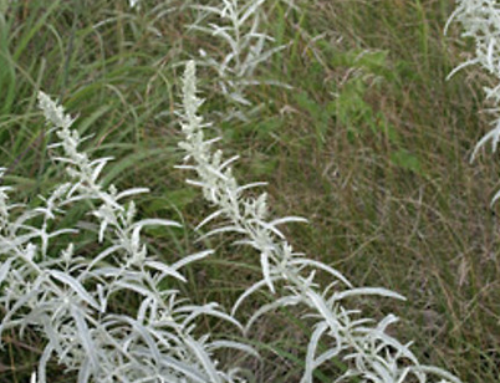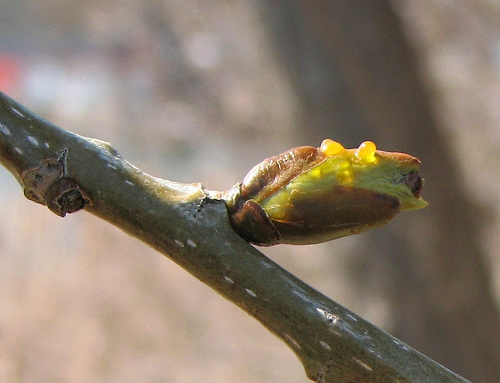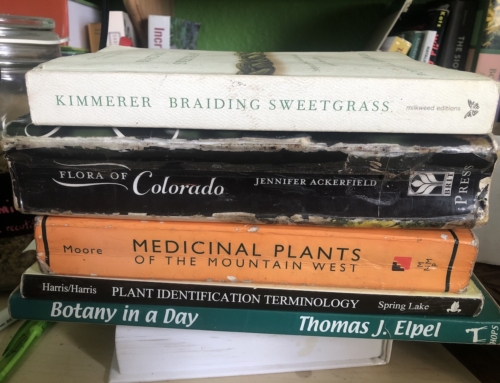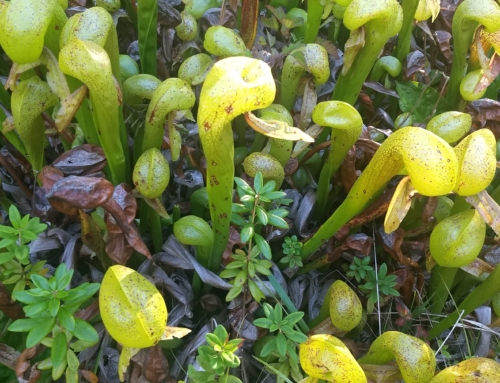For years I’ve been doing surgery support, mostly with and for queer and trans folks, and I wanted to post an outline of my general surgery thoughts and protocols here. Of course, these protocols change depending on the type of surgery and the individual person’s needs. Please feel free to contact me with any comments or questions. This piece is written for herbalists, with the goal of supporting herbalists in working to support folks getting surgery, but could also be utilized by folks who are getting surgery themselves.
In my experience, most people who are not working with an herbalist (or another alternative healthcare practitioner) during surgery will experience some minor (or major) surgery complication, and those working with an herbalist tend to heal faster, have less scarring, have a lower risk of infection, and have less sensation loss due to damaged nerves. These are just personal observations from my own practice and from talking with colleagues.
And to answer the obvious question, yes, that is a picture of a double rainbow (!!!), taken here in the Rocky Mountain foothills.
Framing
- Being client-led can be particularly challenging when working with surgery, because as herbalists we may have our own private hesitations about mainstream medicine.
- Time frame: an ideal client may spend a month or more just working on nutrition and health before undertaking a challenging event like surgery. However, many clients will mostly be interested in herbal and nutritional support during and after surgery.
- In addition to the surgery-specific things, we discussed here, be sure to also address any health concern that brought someone to surgery in the first place.
- You can look up details on the specific surgery your client is going through here, though the list is incomplete.
- Surgery incisions are not fundamentally different from any other type of wound, and it may be helpful to familiarize yourself with the different stages of wound healing to determine what is most useful to prioritize at different points. Learn more here.
Underlying Goals Of Any Surgery Support Protocol
- Nutrition
- Pain Management
- Improve Healing Time
- Prevent Infection or Support Healing of Existing Infection
- Address Medication Side Effects
- Rebuild Gut Flora After Antibiotics
- Nerve Healing
- Address and Prevent Scarring
Surgery Medications To Consider And Address Wholistically
Antibiotics
- Universally used in surgery
- Expect to rebuild all symbiotic bacteria from scratch
- Probiotics and lactobacillus fermented foods, prebiotic teas, bone broth/gelatin gummies, reduced sugar in the diet, etc to heal the gut.
- Sample Digestive Tea Formula: Equal parts
- Althea Officinalis
- Calendula officinalis
- Mentha piperita
- Foeniculum vulgare
- Scutellaria lateriflora
- Matricaria recutita
How to use: 1⁄2 cup overnight infusion in 1-quart water. Drink daily.
Painkillers-Typically opiates and NSAIDs
- Opiate side effects that can be addressed herbally
- Constipation and other digestive disturbance: the client will have a prescription for a laxative, but you can give herbal laxatives as an alternative. Demulcents (Chia, Althea powder, Flax, etc), and even true laxatives (Cascara Sagrada, Senna: be very cautious on dosing: these herbs are strong!)
- Nausea: I like to give the client a 1-oz bottle of “Peppermint Spirits”, using Michael Moore’s ratio of 1pt Peppermint Essential Oil: 20 pts Vodka. Can be taken internally as needed, and the typical dosing is 5 drops. Alternative: ginger tea or ginger chews. See sample digestive tea formula above.
- Slower wound healing: the client may feel motivated to minimize opiate use knowing this, and may benefit from herbs for pain.
- My favorite pain formula includes:
- Jamaican Dogwood/Piscidia piscipula
- Pulsatilla/Anemone patens
- California Poppy/Eschscholzia californica
- Lousewort/Pedicularis spp.
- Many clients have excellent results utilizing Cannabis sativa (Marijuanna) or Mitragyna speciosa (Kratom) for pain management.
- My favorite pain formula includes:
-
- Sedation: this side effect may be desirable to encourage rest and sleep.
- Itchy skin or feeling bugs crawling on skin: occasionally this is very intense.
- Possibility of opiate dependence.
- https://www.ncbi.nlm.nih.gov/pubmed/18443635
- NSAIDs may also slow healing time. I find articles on this inconclusive, but some herbalists will say this. (1) (2) (3) (4) (5) If the client is open to lowering NSAID use, it will be more certain to support digestive healing.
- Anesthesia Medications – some herbalists give Milk Thistle (standardized extracts are probably best here) before, during, and after the surgery to support liver health with these intense drugs. I personally don’t know much about this, but Paul Bergner sent me a case which you can find here.
Infection
In my experience, most people who are not working with an herbalist (or another alternative healthcare practitioner) during surgery will experience some minor (or major) surgery complication. A minor infection in the wound site is very common. Hospitals often are sources of infectious bacteria! Staph and Mrsa (antibiotic-resistant Staph) infections are relatively common!
Sample Immune Support Tincture
Equal parts:
- Ceanothus – To help with drainage and possible swelling around the incision site and also for immune support.
- Mahonia – For immune support/to prevent infection.
- Echinacea purpurea or angustifolia – For immune support/to prevent infection.
3mL 3 times each day. If there are any signs of infection, increase to 1 mL every 30 minutes, or seek allopathic care according to your judgment. This same tincture can also be used topically if there are signs of infection (redness, swelling, pain, pus, etc; Note that some of which will inevitably be at a wound’s site even if not infected). Encourage the client to use their own judgment about the severity of any infection and seek appropriate care for anything severe. Because Mahonia also supports liver function, it may detox pharmaceuticals too quickly for them to have their desired effect. Because of this, I’d recommend starting this tincture after the client is done with any post-surgery pharmaceuticals.
Topical honey can be great to prevent surface-level infections and discourage any infection from getting worse. Also, it is messy.
In my recent correspondence with Paul Bernger on this topic, he emphasized the importance of getting something on the incision as soon as possible that prevents biofilm formation.
Scaring
Scars continue to “remodel” and improve their structure and flexibility for about a year after the wound has closed.
Once the wound is healed, scars can be vigorously and regularly massaged to bring blood flow to the area and break up fused connective tissue. I’ve seen great results with this.
Preventing scar tissue and addressing existing scar tissue includes many of the same principles of tissue healing (increasing protein, stabilizing blood sugar, eating whole foods, improving omega 3:omega 6 ratios, etc). Kat says that the ideal omega 3 to omega 6 ratio for active healing is 1:3.
Some additional things with scars:
- Increase flavonoids and antioxidants (notably colorful veggies). Paul’s famous flavonoid recipe:
- Basic: you fill a quart jar with de-seeded rose hips, and add water, the rose hips take up the water until it is the consistency of jam.
- Modification: Fill a jar with a mixture of rose hips, finely cut orange peel and lycium berries. Then add blueberry juice to fill. Let sit 10-20 minutes until it becomes jam-like
- The Super-Bomb Modification: Fill a jar with a mixture of rose hips, finely cut orange peel, aid lycium berries. Fill with a mixture of blueberry juice, pomegranate juice, and black-cherry concentrate. Consume ad-lib. like jam, relish, or dessert side. Blend with coconut milk and frozen blueberries for an ice cream substitute.
It is a flexible recipe, just use what you have, mix it up. Add some garlic and clove and call it chutney.
- Topical herbs for scars:
- Cell proliferation: Comfrey (we want to avoid this during the initial wound healing because we want the surgical incision to heal inside-to-outside, but it’s fine to use once the wound has healed over. Some people will also use Comfrey internally, but this is controversial due to the presence of pyrrolizidine alkaloids. At the very least, the use of Comfrey internally should be kept short-term…a month or less. Horsetail, Calendula, or Plantain may also be useful both topically and internally for both scaring and wound healing (see nutritive tea below).
- Circulatory stimulants: can be utilized topically (and some are already in the “nerve healing” salve discussed below): Prickly Ash Bark, Ginger, or Cayenne oils can be massaged in topically.
Oils of these herbs combine well with the vigorous massage of healed scar tissue discussed above.
-
- Sam Coffman gives this list of favorite herbs for scars, once healed: Centella asiatica, Hypericum, Juniperus, Plantago, Calendula, Salvia miltiorrhiza, Arnebia euchroma (esp burn scars), Symphytum, Carthamus. He says that the key is in physically breaking up the scar tissue from the outside in, so skin massage is a critical part of this process.
Credit for some of these ideas goes to Kat Mackinnon, Paul Bergner, and Sam Coffman
Lifestyle
- Rest and sleep are super important to healing and should be prioritized.
- Community support! Encourage the client to organize a meal train or other ways for friends or family to be useful.
- Smoking tobacco will slow the healing of any wound, and this includes second-hand smoke.
Nutrition
Increase nutrition to give the client the building blocks needed to grow new tissue. The client will have significantly higher nutritional needs while healing than they would have otherwise, and so they will ideally start out nutritionally replete.
- The main thing I’d suggest is eating as much protein as possible. Shoot for 60-70g/day, the majority of that before noon. See bone broth and gummies recipes below! 1 cup bone broth/day is a great start, and gummies can be eaten daily.
- Eat a lot of vegetables, especially dark leafy greens and flavonoids (antioxidants).
- Oil change: Increase high-quality oils, like organic olive oil, coconut oil (cold-pressed), avocados, etc. Limit or cut out poor quality oils like vegetable oil, corn oil, deep-fried foods, chips, etc.
- Prioritize nutrient-dense foods like seaweeds; prioritize fermented foods like sauerkraut
- Limiting or eliminating sugar and processed foods can be helpful, as sugar and many preservatives will inhibit immunity and slow healing times. Avoid any foods the client is reactive/sensitive to.
Above all, encourage the client to listen to their body’s intuition around what it needs. If something I say doesn’t feel right, I would trust the body first.
Supplements
**I ideally like to start these about a month before surgery, so that a client goes into surgery nutritionally replete.
- Start a quality multivitamin -deficiencies in vitamin A, vitamin C, vitamin E, magnesium, copper, zinc, and iron could all prevent effective healing.
- Mg: 200 mg twice per day (I like the Natural Calm brand).
- D3: I would suggest doing 5-10,000 IU per day but at minimum 2,000 IU per day.
- Probiotics – since the client will be on antibiotics for the surgery, get a good probiotic to take afterward. I like the Jarrow brand probiotics (relatively affordable) or Megaflora (relatively expensive).
- Omega 3 fatty acids (2-3g/day). Although its extremely unlikely to cause any problems, the surgeon may tell the client that fish oil is a “blood thinner” and shouldn’t be used during surgery (theoretically it could cause excess bleeding or prevent healthy coagulation, though I don’t know of any cases where this has actually happened). To prevent this topic from coming up, I typically tell the client to discontinue a few days before surgery and resume a week after surgery.
- Vitamin C: 2 doses of 500mg each daily for a month after surgery.
- If the client is averse to food sources, supplemental organs may be useful: liver, cartilage collagen, organ meats.
- Homeopathic Arnica is commonly taken after surgery, and topical Arnica gel or salve can be useful after the wound has healed shut to encourage the body to remodel the scar tissue, though I personally haven’t used Arnica with my clients in this way. Of course, Arnica should never be put directly onto broken skin.
Sample Herbal Formulas and Recipes
Nutritive tea
(300g total)
- Equisetum arvense, Horsetail (aerial parts), 35g – for tissue regeneration
- Arctium lappa, Burdock root, 50g- to support gut flora (antibiotics given during surgery)
- Pedicularis racemosa, Parrot’s Beak (aerial parts), 50g- for stress around major life change and for relaxing any muscle tension near the wound.
- Calendula officinalis, Calendula flowers, 30g- As a cell proliferant, and to support the gut which may be compromised due to antibiotics.
- Plantago major, Plantain leaf, 35g- to support the gut which may be compromised due to antibiotics, and to provide allantoin to support cell proliferation at the incision site.
- Mentha piperita, Peppermint leaf, 30g- for vitamin C, improve the flavor of the tea, and prevent nausea
- Althaea officinalis, Marshmallow root 30g- to balance the dry formula and the dry Denver climate; to support digestive health with probable constipation post-surgery.
- Cinnamomum cassia, Cinnamon bark, 40g- to aid in blood sugar balance and to be warming and moistening, which balance the formula’s energetics.
The tea can be prepared as an overnight infusion. I usually have clients do this tea for about a month after surgery. This recipe is about 10 days worth.
These herbs impact the digestive system, and so they may alter the rate of absorption of a pharmaceutical, and so they should be taken after you go off of any post-surgery prescriptions.
Incision Infused Oil
Start this 4 days after the surgery OR whenever the client leaves the hospital, as the hospital will have their own wound care protocol while the client is in their care. Or, perhaps start immediately to avoid biofilm formation. There is some disagreement about this, as Paul Bergner emphasizes the benefits of immediate application of herbs to prevent the formation of biofilms, and Sam Coffman says he usually waits until the re-epithelialization stage of wound recovery to apply any oil, 2-4 days after the surgery. Personally, I hesitate to put any oil in an open wound and I would do honey instead. However, oils should not create an anaerobic environment like the beeswax salve below and can be started much sooner.
- 1oz Hypericum perforatum infused in olive oil*
- 3 drops Helichrysum essential oil
- 3 drops Rosmarinus essential oil
- 3 drops Lavendula essential oil
Massage oil into the incision site every 8 hours.
Calendula could be a good herb to include in oil like this.
Nerve salve
Start this about 2 weeks into healing once the incision has scabbed over. Applying a beeswax salve to a fresh wound of any sort can create an anaerobic environment that fosters bacterial infection! So wait until the incision has started to heal over. I’d recommend you apply it daily to the entire incision site and to any area that has altered sensation (numbness, tingling, etc.). This will help support the healing of nerve tissue. I’ve seen excellent results with this specific recipe!
- 2 pts Hypericum perforatum oil (fresh flowering tops infused in olive oil) – topically for nerve healing.
- 2 pts Zanthoxylum americanum oil (dry bark infused in olive oil) – topically to bring blood to nerves.
- 1 part Achillea millefolium oil (dry flowering tops infused in olive oil) – topically healing.
- 1 part beeswax – for consistency
- Helichrysum essential oil, 10 drops per pint of salve, Rosemary essential oil, 10 drops per pint of salve, Wintergreen essential oil, 10 drops per pint of salve.
I typically dispense 2-4oz. It goes a long way!
**Credit for this recipe goes to the herbalists of the Stone Cabin Collective who run the Elder Wellness Week clinic at Black Mesa.
Sample Gummies Recipe
- ¾ cup lemon juice
- 1 cup frozen blueberries
- ¼ cup grass-fed gelatin
Instructions:
- Blend juice and berries thoroughly and pour into a saucepan.
- Add the gelatin and whisk together until everything is thin consistent.
- Pour into silicone molds or a small baking dish and refrigerate until they firm up.
Useful for gut healing after antibiotics/opiates, for improving protein to rebuild tissue after surgery, for ease of consumption if someone is somewhat immobilized and more palatable than bone broth for some people. I order gelatin here from Great Lakes Gelatin Company
Sample Bone Broth Recipe:
- 2 pounds (or more) of bones from a healthy organic source
- 1 onion
- 2 carrots
- 2 stalks of celery
- 2 tablespoons Apple Cider Vinegar
- Sea Salt
- 2 cloves garlic (added in the last 30 minutes)

